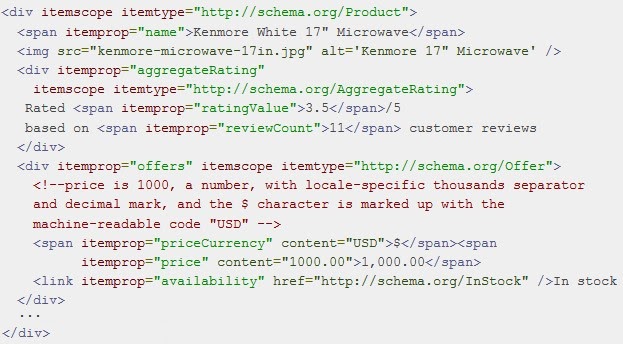Using structured data for your e-commerce website can enhance your products in search results with rich snippets and provide a real SEO boost. Actually, those structured data can give you an advantage over your competitors by giving extra details in the SERPs and increase your click-through rate over the other results. While rich snippets are a necessity for your e-commerce website, relying on structured data is a relevant solution to boost your business.
The advantages of structured data for ecommerce websites
It improves your ranking signal
Even if Google has stated that structured data don’t have a direct ranking impact, it brings indirect rankings because it affects CTA and bounce rate, which are ranking factors.
It boosts click-through rate
Rich snippets improving your CTA is not big news. It used to give a big advantage to companies using it as they were only a few implementing it in the results to be marked up. Today, not having any marked-up results can be a disaster for product pages. For an high amount of product-related search queries, all of the above-the-fold results contain structured data. That’s why you should jump in structured data to avoid others killing your CTA.
It increases user engagement
Structured data can improve your user engagement even before they land on your page. Actually, if they have the information they were looking for before clicking on your results (like the price of a product), they will be more likely to convert and then to reduce bounce rate. So, it also influences your ranking signals if your bounce rate stays low.
What types of structured data can you use?
It exists different types listed on Schema.org but the four ones to keep in mind for online products are:
- Name
- Aggregate Rating
- Price
- Availability
By adding these schemas on a product page, they will likely display the marked-up information in search engine results if that page ranks for a related query.
To use them, you first need to embed the content about the product between itemscope itemtype=”http://schema.org/Product”> and tags. Then, you need to locate the product name within the area and put it in tags.
Then, be sure to allow customers to rate the product by using a five-star system. Knowing that, add another section to the code (inside the itemscopeitemtype=”http://schema.org/Product”> section) so it contains the rating content. This should be marked-up using itemtype=”http://schema.org/AggregateRating”>tags. Within this Aggregate Rating section, tag the average rating with tags and the number of ratings contributing to that average with tags.
Finally, build another section containing the “offer” markup including the price and availability inside the itemscope itemtype=”http://schema.org/Product”> . The price should be formatted within this Offer section using tags. Assuming that the product is in stock, also include the tag in the Offer section.

Use the Google’s Structured Data Testing Tool to ensure your schema code is working and see how it would display in the SERPs. By doing so, you will see your CTA, keyword rankings and qualified visitors increased. Develop this strategy to match your pages with qualitative search queries.
Wanna know more about the impact of schema.org? One of our guest author wrote something very interesting!
With Oncrawl, you can easily analyze your structured data and access actionable insights!

